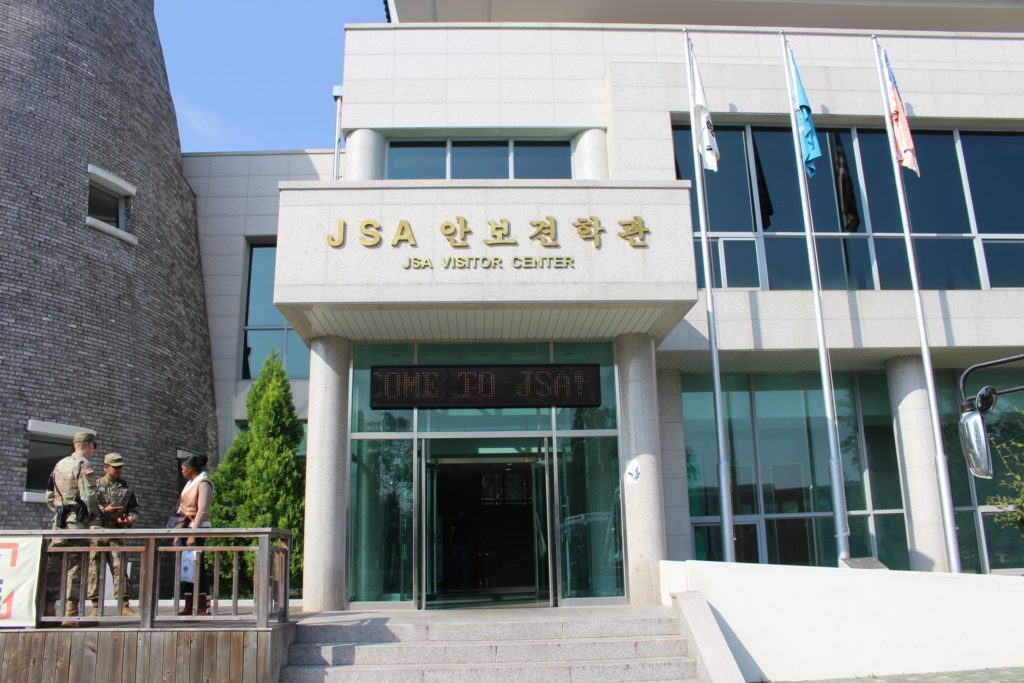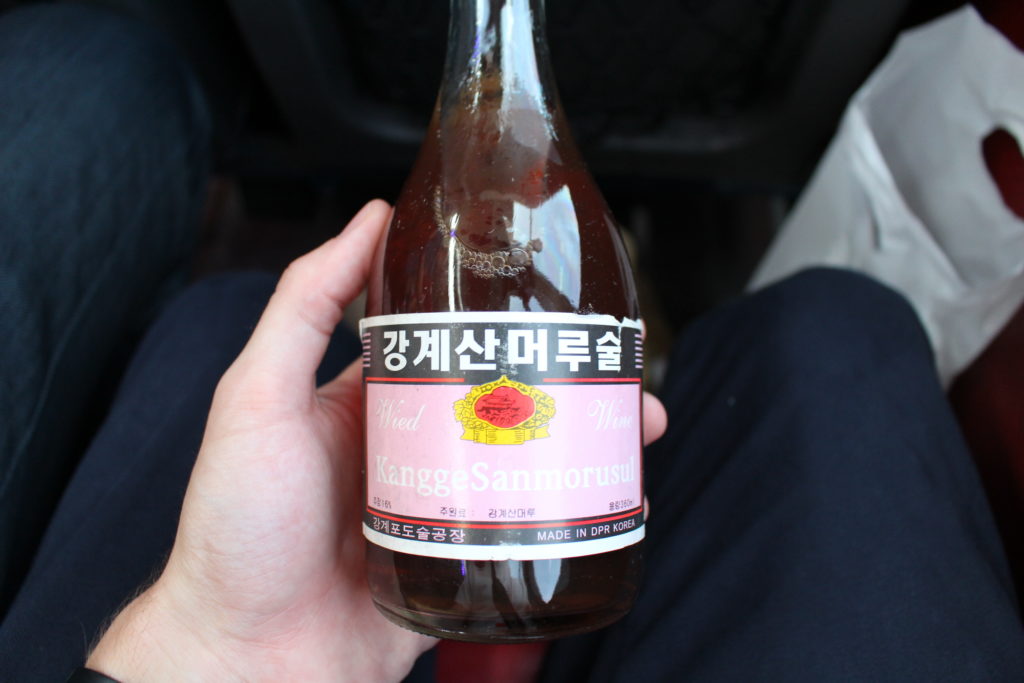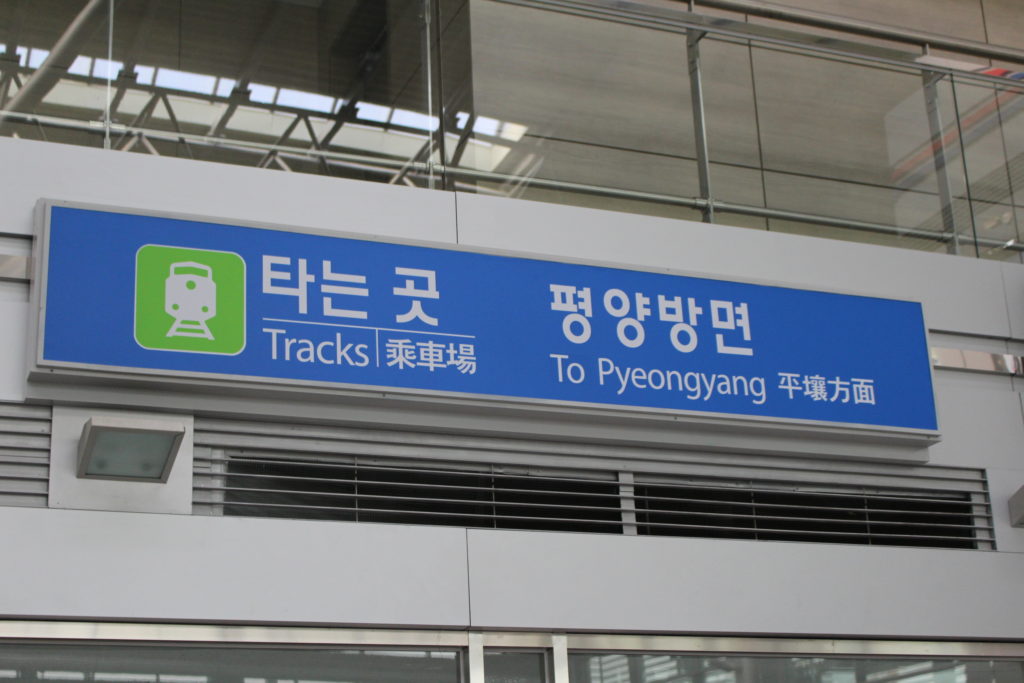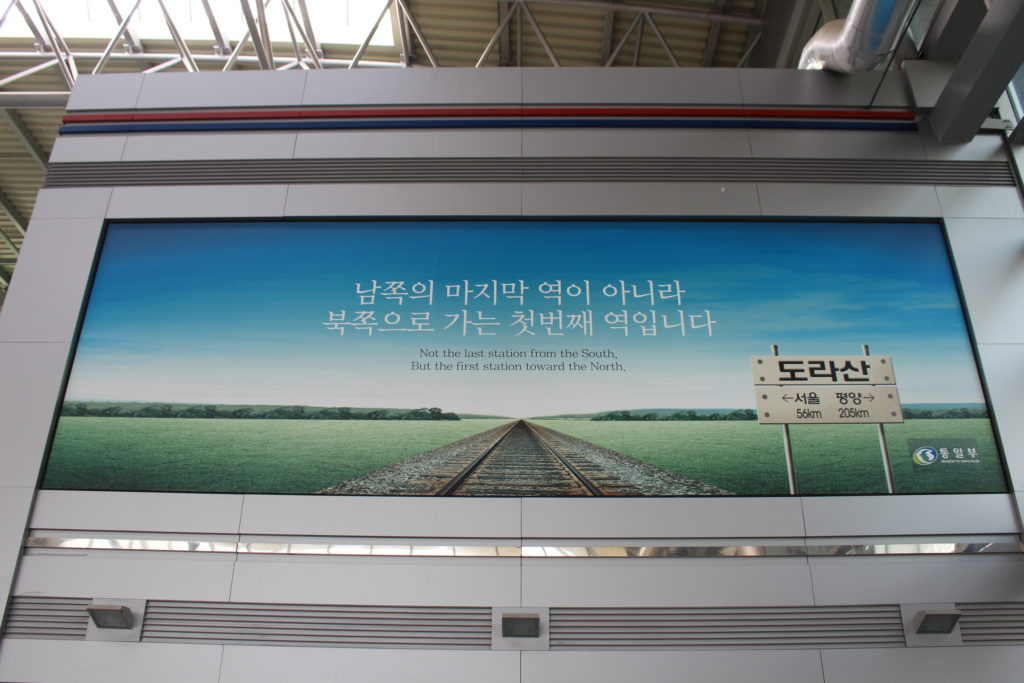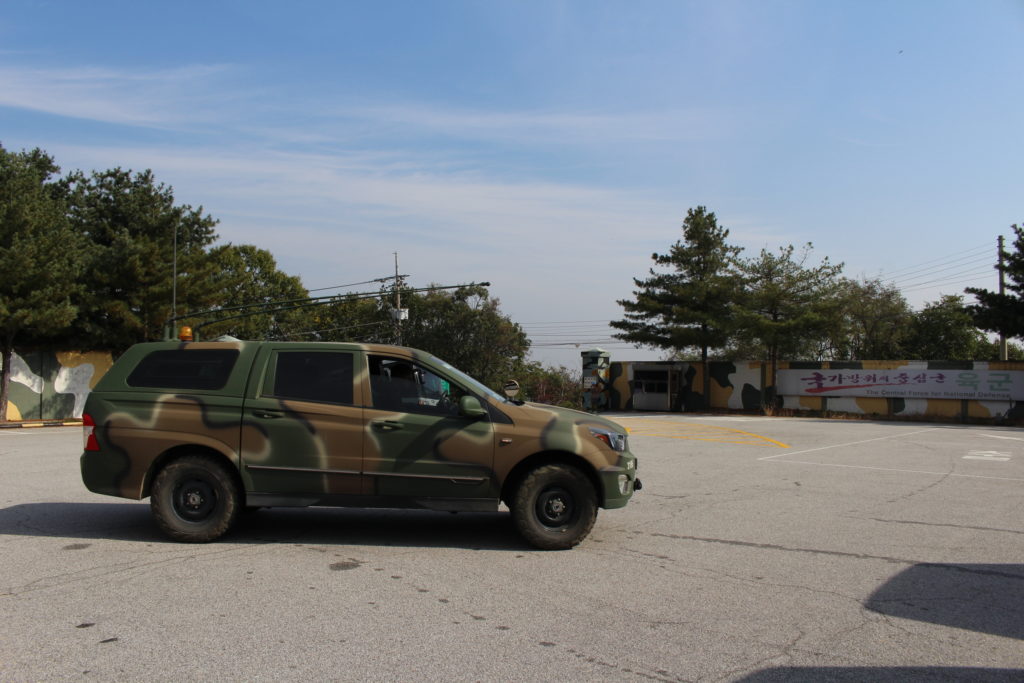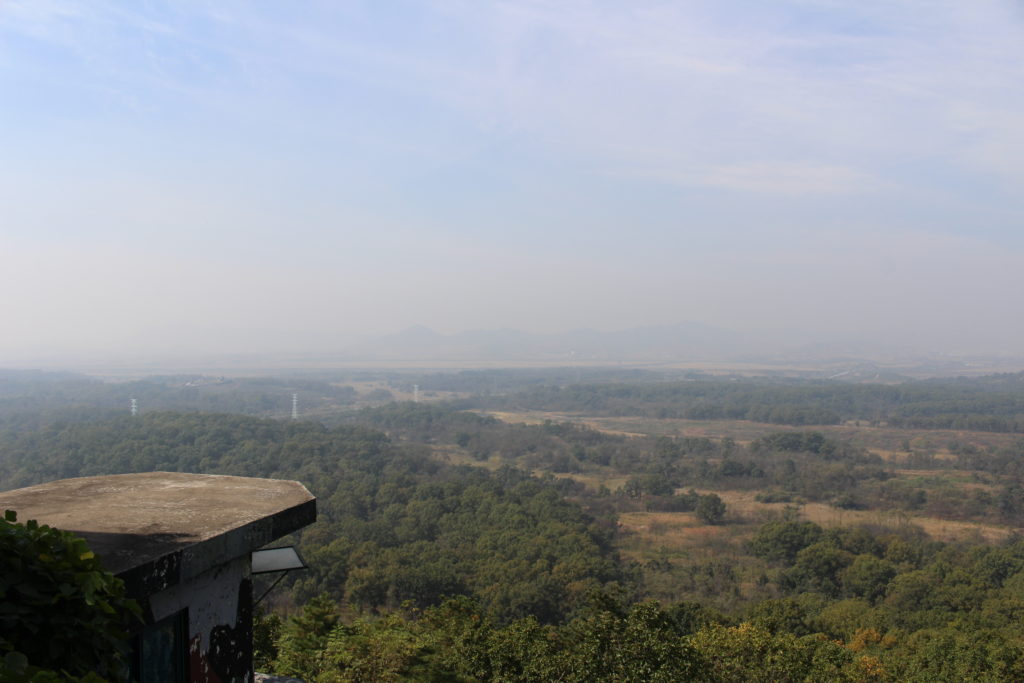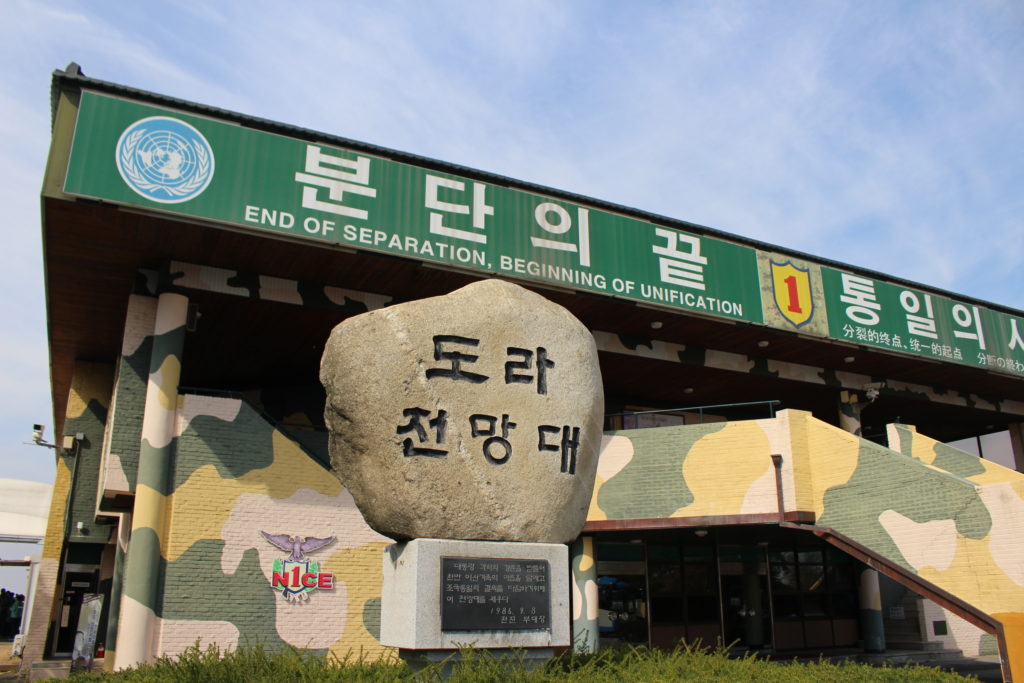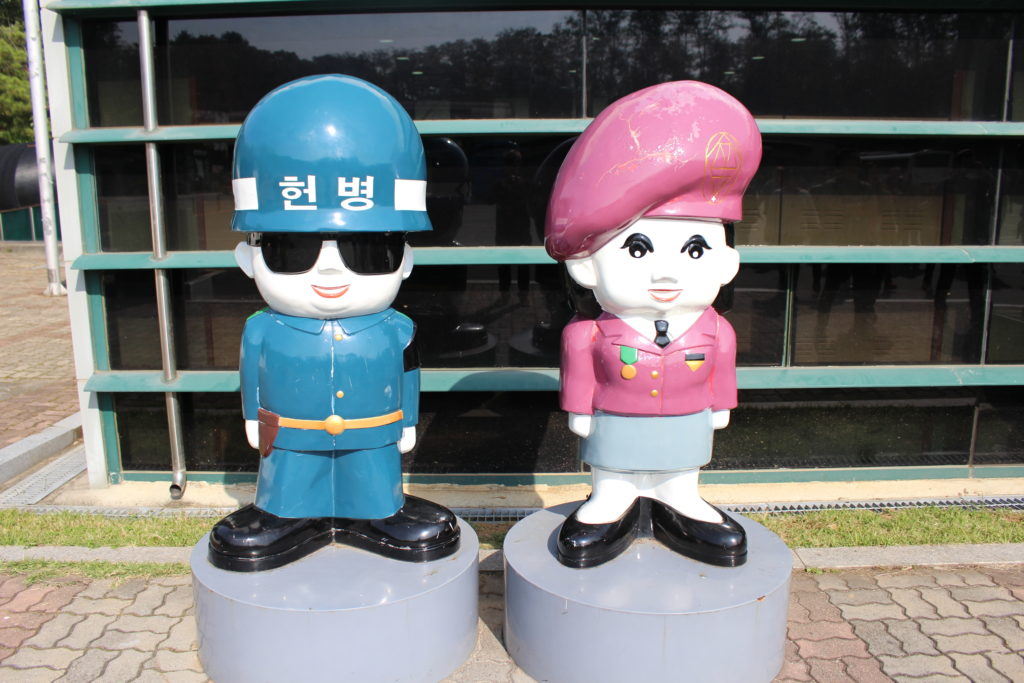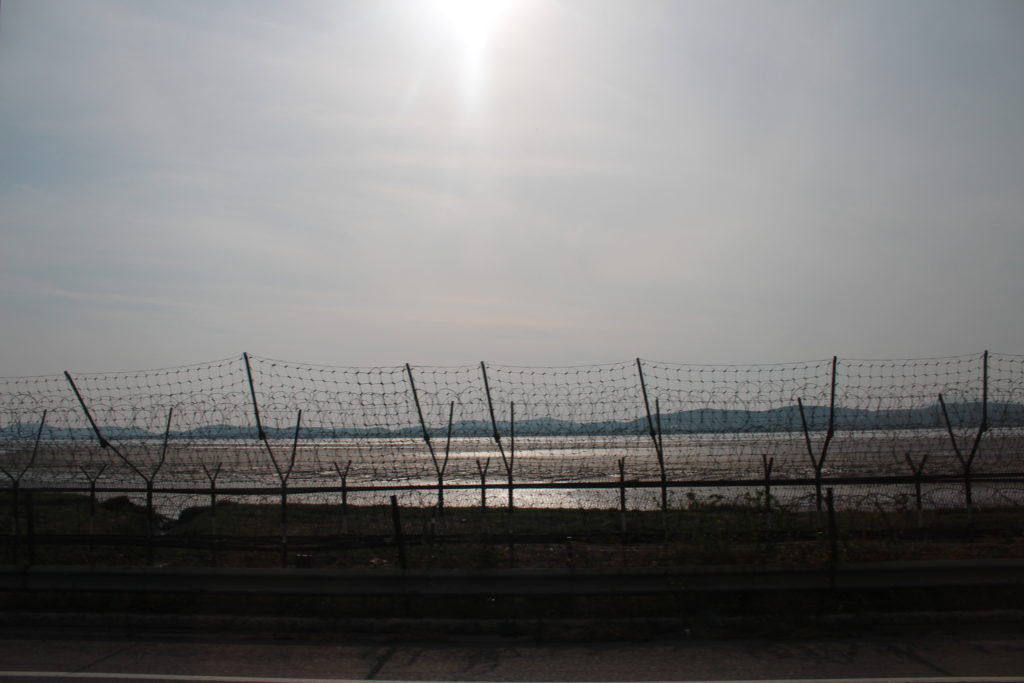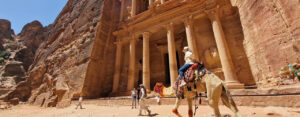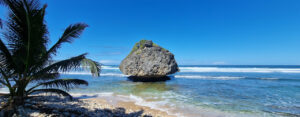
I’m a Little Despot, Short and Stout
I left you last at the infamous blue meeting rooms of the Joint Security Area (or JSA), having spent the morning hopping between North and South Koreas and taking photos with stern-looking border guards. Our group was then shown towards the North Korean gift shop, where all manner of legally-acquired northern merchandise was up for grabs. The temptation to buy an enormous portrait of Kim Jong-il to place above my imaginary mantelpiece was great, but I made do with a bottle of North Korean wine, a one hundred Won banknote with Kim Il-sung adorning the front, a pack of the ugliest postcards I have ever seen and a bookmark of a JSA border guard in full intimidation/constipation stance. Enough DPRK goods to last me till my next visit anyway (I think I’ll send one of the god-awful postcards back home telling my family I’ve defected).
Breaking with tradition, the gift shop was not the end of this tour as we were then escorted to Dorasan Station, a railway stop which used to provide the only line between the two warring nations. Located approximately six hundred and fifty meters from the southern boundary of the Demilitarized Zone, the once bustling station ceased heading north in 2013 and is now merely seen as a symbol of what a unified Korea could look like. If it ever reopened, it would make the journey from Seoul all the way to London a real possibility – utilising the Trans Eurasian Railway Network. What a journey that would be. Although, for now, the only ticket that you can buy from the solitary ticket office is one that takes you back to Seoul.
The Dora Observatory is situated near to Dorasan Station (unsurprisingly on the top of Mount Dora) and is often the location where world leaders visit to observe North Korea from a distance, usually with furrowed, concerned looks on their faces. To get there you must ascend a steep track laden with more warning signs than there are on the entirety of the M4, although these are for landmines as opposed to Leigh Delamere services – I suppose they are comparable. Unfortunately, we arrived at the same time as four busloads of eager schoolchildren, meaning some forceful shoving was required to get to the front of the queue to witness the most heavily landmined area on planet earth (humans aren’t half fascinated by fucked up things).
We waited for the adolescents to leave before having a thorough glance through some thoroughly useless specialized binoculars. As the day was fairly foggy, we were unable to spot the Panmunjom flagpole (which the North built in answer to South Korea’s own massive flagpole – but increasing its height by sixty-one metres). Although it obviously wasn’t big enough as we could see bugger all, apart from a few buildings from the village of Kijŏng-dong (also called the Peace Village). This location is often referred to as the loneliest town in the world, as nobody actually lives there (but for a couple of maintenance guys). The buildings are all for show, and have no windows or floors inside – they are purely used to support the notion that the North live in fairly prosperous conditions, which we know is 100% accurate.
But North Korean shows-of-force do not stop at heightening their poles, oh no. On route back to Seoul we stopped at the entrance of a tunnel dug in the seventies by the South to intercept one of a series of (supposedly) twenty-four tunnels carved by the North in order to launch a surprise attack on the capital. The ‘Third Tunnel of Aggression’ is the only one you can still clamber down into and walk along until you eventually reach the first of three barricades built to stop a tunnel-based invasion. A small hole was left in the thick, concrete barrier in order for tourists to take an eerie look into the blackness of the North. As photographs were forbidden throughout the site, you’ll have to take my word for how spectral and sinister the place felt – as if Kim Jong-un himself was about to charge through the barricades on a steel steed with a rocket launcher over his shoulder.
Thankfully, that did not happen. Instead, we returned to our transport and continued following the Imjin River (and it’s heavily fenced and patrolled shores) along the border before arriving back in Seoul not long later. I didn’t realise just how close the South Korean capital was to its enemy until now, it really is just a stone’s throw (or an artillery blast) away. I hope to god that it never kicks off, as it would result in a quite unimaginable symphony of destruction. So, that brings me to the end of my ‘day’ in North Korea (which was actually about five minutes although please read my first post as to why I’m not spending all of my summer holidays there). I must say it was about as morbidly fascinating as I expected, with a dash of sheer bafflement. The fact that tourists are allowed (even encouraged) to visit what appears to still be such a volatile environment (after all the two nations are still at war), absolutely amazes me. Although I’m glad that we are, as it has provided me with the briefest of looks into one of the most reclusive, unpredictable and captivating nations on earth (excluding Belgium of course). Let’s get back to Daegu.
J
